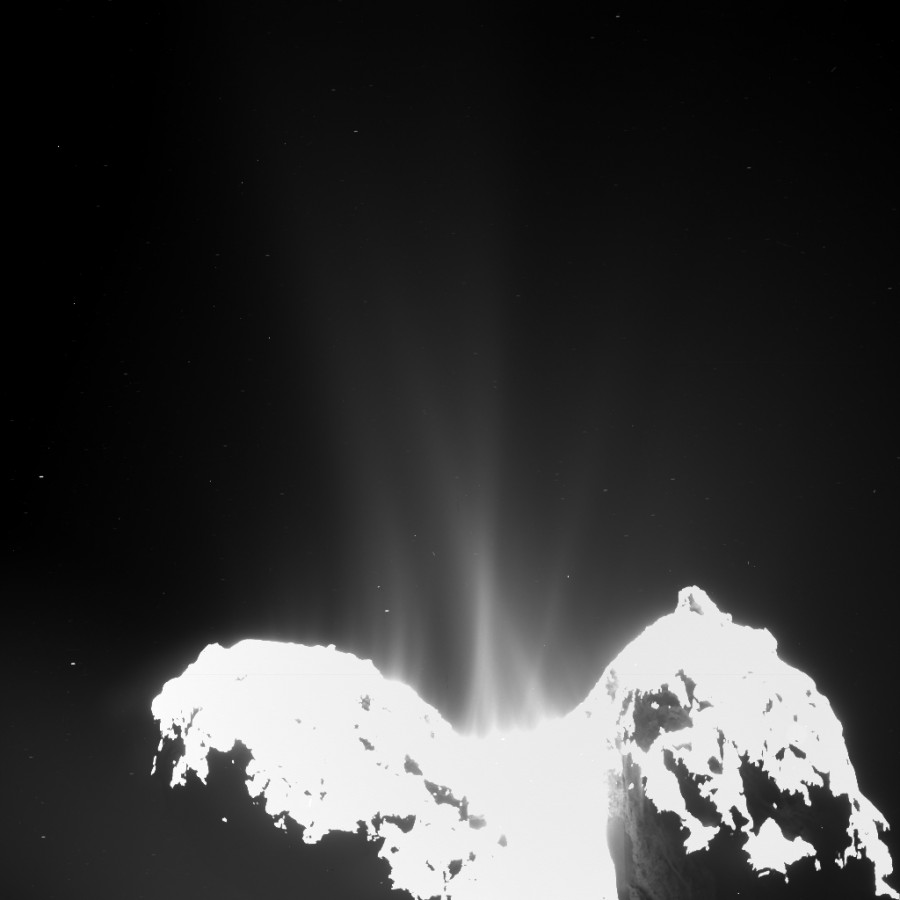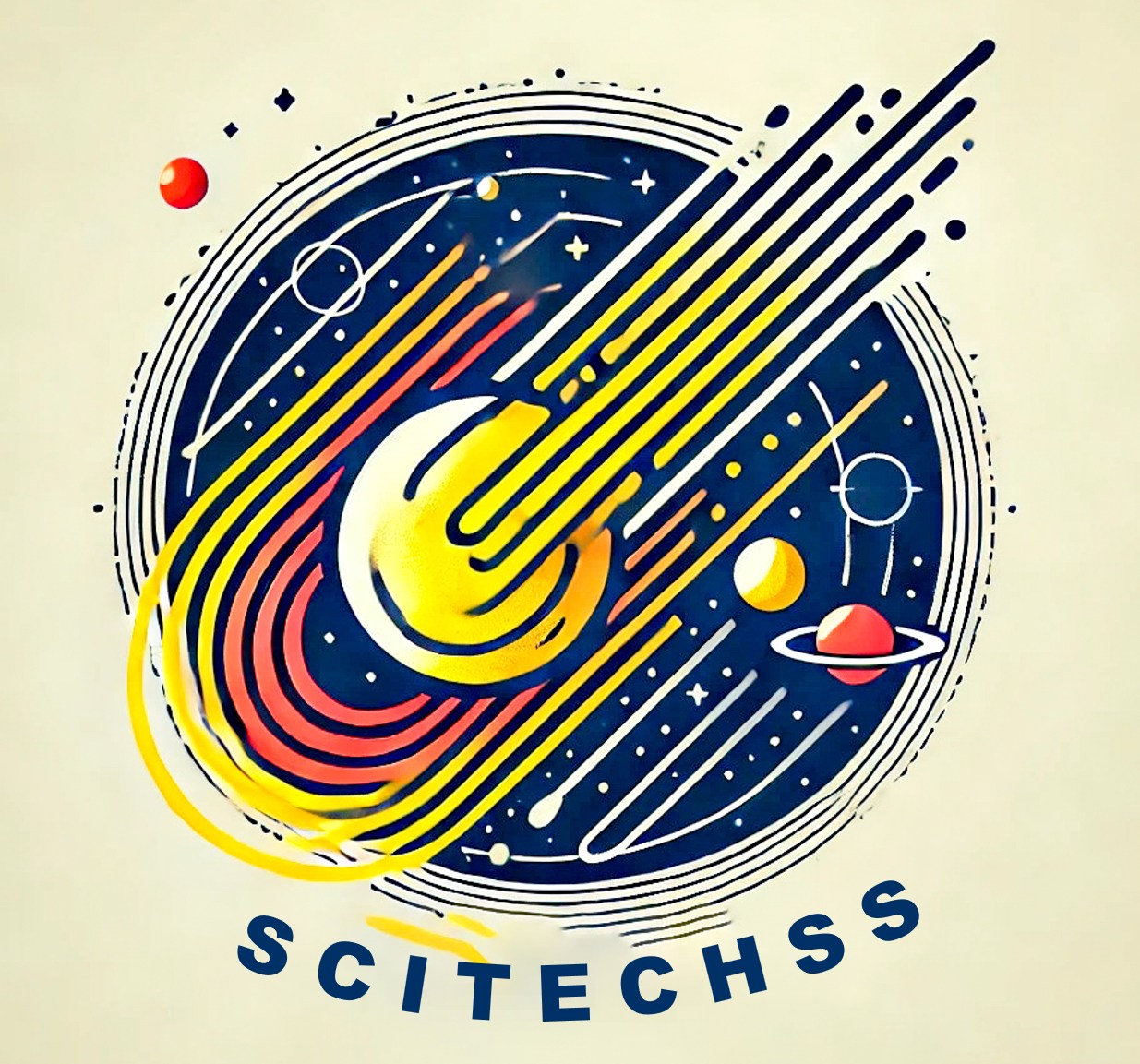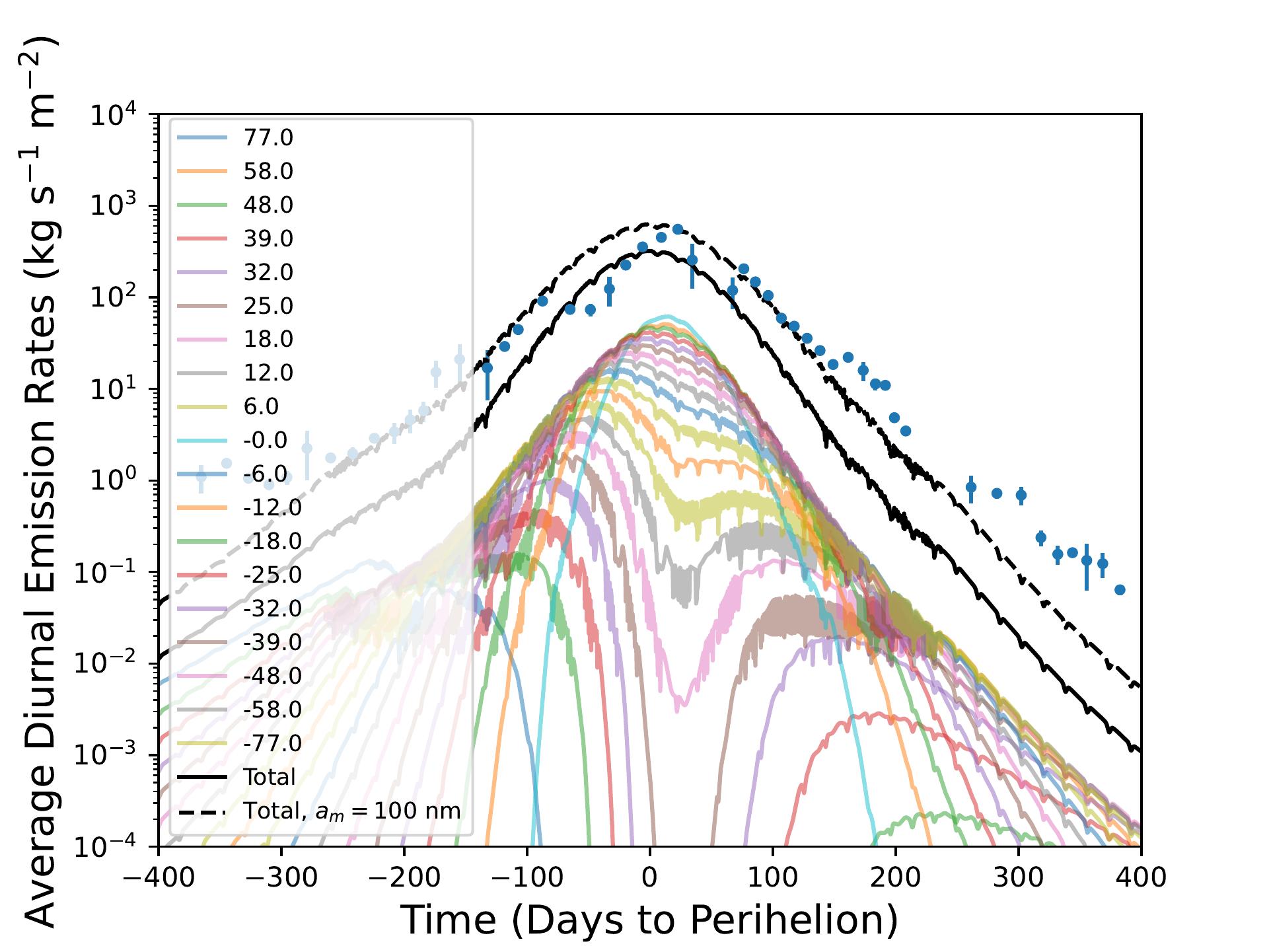Authors, led by Nicholas Attree in the SCITECHSS group at IAA – CSIC, and at the Technische Universiät Braunschweig (Germany) have published a new paper on thermophysical modelling of comet 67P/Churyumov-Gerasimenko.
Comets are among the most primordial objects in the Solar System and their study therefore gives direct insights into the era of planet formation. When entering the inner Solar System comets become active: ices begin to sublimate, leading to the ejection of dust from their surface and the formation of a coma and tail, but the detailed mechanisms involved are still not well understood. 67P remains the best-studied comet due to the wealth of data returned by ESA’s Rosetta spacecraft, so computer modelling of its activity is important for our understanding of these objects.

OSIRIS image of Comet 67P/C-G on 10 September 2014, showing jets of cometary activity along almost the entire body of the comet.
Credits: ESA/Rosetta/MPS for OSIRIS Team MPS/UPD/LAM/IAA/SSO/ INTA/UPM/DASP/IDA
The new paper tests recent ideas of ices sublimating inside centimetre sized ‘pebbles’ making up the comet with a numerical computer model. The results show that sublimating gas can be trapped inside the pebbles, leading to large pressures building up which are enough to break the pebbles and eject small dust particles. The model can therefore produce repeated activity over several orbital periods, as well as reproducing the peak rate of water outgassing observed by Rosetta at 67P. Also observed by Rosetta were the ejection of larger chunks of centimetres to tens of centimetres in size, and this could also be simulated in the model with the addition of Carbon Dioxide (CO2) ice sublimating at a deeper level beneath the first pebble. However, a number of problems with the model remain. For example, when enough CO2 was included to eject the chunks it then produced too much CO2 outgassing compared to the observation. The rate of erosion of the surface by ejection of the small dust was also too large compared to the data. This suggests that further work is needed to fully understand 67P and other comets’activities before ESA’s next comet mission, Comet Interceptor, is set to launch in 2029.
The paper is published open access in Monthly Notices of the Royal Astronomical Society here, https://academic.oup.com/mnras/advance-article/doi/10.1093/mnras/stae2315/7816388?utm_source=advanceaccess&utm_campaign=mnras&utm_medium=email, and can be found on the ArXiv here https://arxiv.org/abs/2410.03251.
Also https://x.com/nick_attree/status/1844646560065352060
Featured image/Excerpt: Example of average diurnal emission rates over the full comet surface obtained with the model. Image taken from the article (Fig. 8)

